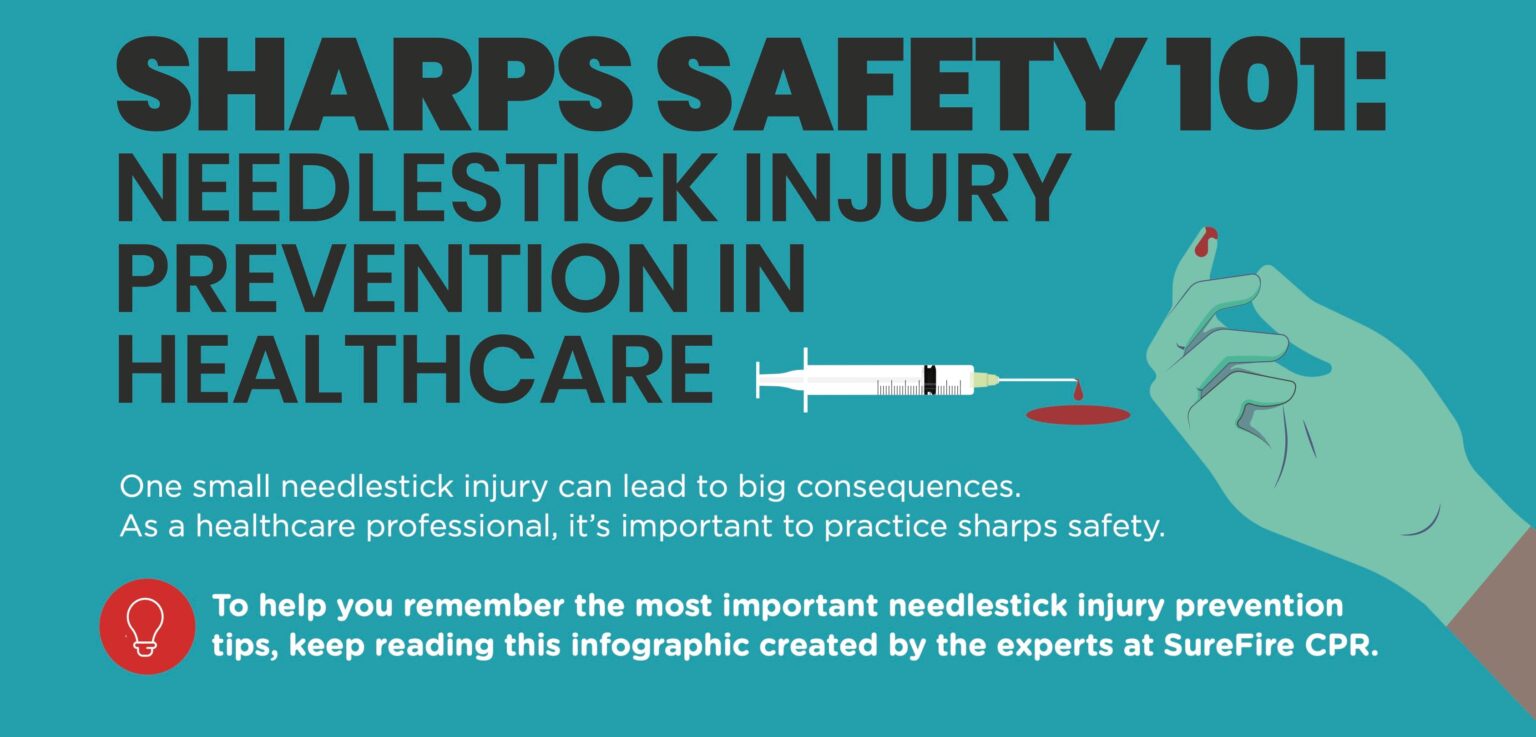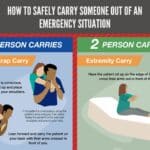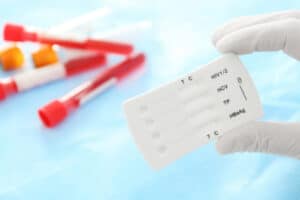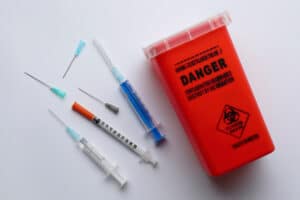Needlestick injuries are preventable yet dangerous hazards in the medical field. A needlestick injury occurs when someone’s skin is punctured by a contaminated needle or sharp.
Medical professionals face a higher risk of needlestick injuries as they might encounter used needles on the job. To prevent the risk of needlestick injuries, it’s important for healthcare workers to learn sharps safety, follow protocol, and advocate for safer devices in the workplace.
Risks Associated with Needlestick Injuries
Unfortunately, needlestick injuries pose multiple health risks. Contaminated needles can spread bloodborne pathogens, the particles that carry bloodborne illnesses such as hepatitis B, hepatitis C, and HIV. These infections can be serious or even fatal. As such, it’s important to be cautious when handling needles, sharps, and any contaminated medical waste.
The exact needlestick injury risk of transmission is unknown. However, according to the NIH, data shows that the “risk of transmission from a single percutaneous needle stick or cut with a scalpel from an HIV-infected individual is about 0.3% or 3 out of every 1000 healthcare workers.”
Steps to Prevent Needlestick Injuries
If you remember how to prevent needlestick injuries, you can help keep yourself and your coworkers safe. The following tips help reduce the likelihood of exposure to contaminated needles and sharps injuries.
Use safety-engineered devices
Medical devices with safety features to help reduce needle hazards are available. You can work with your employer to research, order, and implement these devices. Having the right tools will help keep everyone safe.
Practice safe handling techniques
Always follow safe handling techniques when dealing with a needle. First, avoid recapping needles unless absolutely necessary, such as for a specific medical procedure. If you do need to recap the needle, be sure to use a safe method such as the one-handed scoop. You should always handle needles and sharps with caution.
Wear personal protective equipment (PPE)
It’s important to dispose of needles and any other sharps properly. When determining what should be done with a used needle, remember the “when” and “how”. It should be disposed of promptly, as the less time that the needle is left exposed, the better. Quick disposal reduces the likelihood of injury because it’s less likely that someone will accidentally encounter it.
As to “how”, the needle should be placed in an appropriate sharps container. These containers may be red or otherwise clearly labeled to indicate that they are especially for sharps disposal. Make sure your employer empties these containers regularly and follows all sharps container safety measures.
Education and Training for Healthcare Workers
As a healthcare worker, adequate needlestick and sharps training is essential. Whether you’re a new employee or you’ve been in the field for years, it’s helpful to refresh your knowledge of best practices and safety.
SureFire CPR’s Bloodborne Pathogens Training is a great way to learn more about the risks associated with sharps, needlestick injury symptoms, and more. The course is online and self-paced, so you can learn at your own speed from the comfort of home. Certification is valid for one year and you’ll receive a certificate upon course competition that you can share with your employer. It’s always a good time to sharpen your sharps skills.
Reporting and Follow-Up
After you’ve sought care, follow needlestick injury protocol general practice and report your injury. Reporting needlestick injuries in the workplace will help both you and your employer. Your employer can help you determine your risk level depending on the usage of the needle, and you can work with your healthcare provider to plan treatment accordingly. Reporting sharps injuries also helps reduce future risk. If an unsafe behavior or hazardous workplace condition caused the injury, your report could help get it corrected before another injury happens.
Conclusion
If medical professionals, employers, and safety experts work together, countless needlestick injuries could be avoided. It’s essential that the healthcare industry prioritizes the prevention of needlestick injuries with additional training, safety devices, and implementing protocols.
You can continue learning about needlestick presentation and sharps safety by taking a training course from SureFire CPR. Contact us today to learn more.
Needlestick injury questions and answers
How common are needlestick injuries?
According to the AMA, needlestick injuries occur an estimated 600,000 to 800,000 per year in the United States.
What should you do to prevent needlestick injury in health care?
To prevent needlestick injuries, always follow needle handling guidelines, wear PPE, and dispose of needles and other sharps correctly.
What is the Needlestick Safety and Prevention Act’s impact on healthcare workers?
The Needlestick Safety and Prevention Act helps protect healthcare workers by promoting safer sharps procedures in the workplace.
What should be done with a used needle?
A used needle should be disposed of in a marked sharps container promptly after use.
What percentage of needlestick injuries are preventable?
OSHA reports that 62 to 88% of needlestick and sharps injuries could be prevented with safer medical devices.










